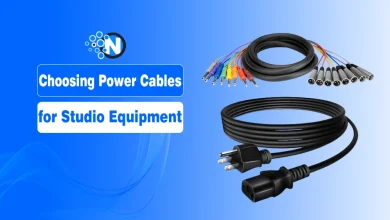Proven Methods on How Web Design Impacts Your Traffic and Sales

The point of any business is to, of course, make money. When it comes to online-based companies and e-commerce stores, one of the core ways to do that is to attract traffic. In fact, increased traffic is almost synonymous with sales.
It’s pretty much a given that you want to do everything you can to increase traffic and sales. In this article, we will focus on web design.
The way your websites are set up, how they look, how well they run, all directly influences your bottom line. For every dollar you invest in UX, you can get up to a hundred in return. Below are some proven ways web design influences your traffic and sales, and what you can do to maximize your results.
Make things easy
Everything you do when running a business should lead to the final goal – make more money. Whether that’s through raw conversions, extra traffic, more visibility, it doesn’t matter as long as it increases your bottom line in an ethical and legal way. Web design is no different.
If we take the above into consideration, then the best place to start is your navigation bar. It sounds deceptively simple, but seeing a website do this poorly will make things much clearer. A good website has to have an entire sitemap that lets people make a purchase easily.
Think about this – have you ever looked for a specific product or service online, found a good-looking website, and then given up on it because you can’t for the life of you make a simple purchase? The website was either overcomplicated, you can’t find real information on billing info, the shopping cart is unintuitive, and simply not trustworthy? That’s what you want to avoid.
You want people to visit your website, and be guided to what they want. Products need to be organized neatly by categories. The navigation bar should instantly present them with information that leads them to the next step. Shopping cart and purchase pages should have all the information people need to feel secure and safe when ordering a product or a service.
Looks matter
In recent years, have you ever visited a website that looks like a relic from the early 2000s? And how did that feel? Would you buy something from a website like this, or did you just nope the hell out of there?
Around 94% of people don’t trust ugly websites. However, this isn’t just about pure aesthetics. There is an art to designing a web page. Colors that hurt your eyes, backgrounds that divert your attention from the actual content and products, blocks of text, all of these need to be avoided.
Then there are things like consistent branding. For example, a company selling organic supplements and natural products should have that reflected in its design. Warm colors with lots of green elements are what you should be going for. A website advertising stereotypically masculine items like watches, shaving razors, beard balms might go with dark, earthy tones.
Imagine the opposite – a fitness website focused on powerlifting advice and gear in a pink and sparkly tone. Or children’s toys with a dark and brooding aesthetic.
Things need to run well
A good website represents your company to the world. If it crashes, if it runs poorly, or if too many of its pages end with a 404, you will lose the trust of potential consumers. Why should they trust you with their money if you can’t even have a website running properly?
Then, you should keep loading speeds in mind. By increasing your loading times by just one-tenth of a second (when it comes to mobile sites), you can increase conversions somewhere between 8 and 10%.
If needed, invest in better software, or better developers. Give them the tools they need, provide them with better computers, better hosting, better WordPress plugins. Just like you would invest in good Business Management Software to help yourself and your team out, so you should invest further in your websites and your devs.
Don’t forget about mobile. Around 54% of global traffic comes from smartphones. You need to double-check if everything is running smoothly there as well.
Implement A/B (split) testing
A/B testing is a simple experimentation process you can use to diagnose various issues. It centers on two versions of things we want to experiment on – in this instance a website or one specific page. You modify one or both extensively, but differently, and observe what happens.
Are you unsure how a specific design element will impact loading speeds? Test it out. If it slows things down by a second, you went too far. If it’s a tenth of a second, think about whether it matters. See where you can improve, figure out how much modification is worth your time.
Remember to note all the variables for the control (unmodified) page, and then note all the changes you make for all other versions. The clearer you are, the better your results will be.
Content, trust, and thoroughness
Content is a vital part of web design, if not perhaps directly. In fact, web design is there to present content in the best manner possible. That’s why you want to have relevant content that should attract visitors, maximize conversions, and direct them to a sale.
You also want your trust symbols to be as visible as possible. By this, we mean client testimonials and reviews, awards given by trustworthy and relevant sites. You should pride yourself on (and show off) security badges given to you by security software firms, as well the partnerships you built with powerful brands.
Finally, you want to cross your Ts and dot your Is. Implement clear CTAs (call to action). The button needs to be clear and actionable, without looking cheap. It needs to be enticing, without looking cheap or chopping up the content.
Your contact forms are also part of your Ts and Is. Double-check them, see if they work. If a client can’t contact you, you can pretty much see that as a loft conversion. Things always spring up, and getting a clear path towards communicating with your company is a must. It should be minimal, having only the necessary information, so people can submit a query quickly and easily.
Conclusion
And there you have it, folks – a guide on how web design influences your bottom line, and the actions you can take to make more money. Maximizing your conversion rates, minimize friction, and do everything you can to have people come, and stay, on your websites.
Author bio
Travis Dillard is a business consultant and an organizational psychologist based in Arlington, Texas. Passionate about marketing, social networks, and business in general. In his spare time, he writes a lot about new business strategies and digital marketing for Seoturnover.




